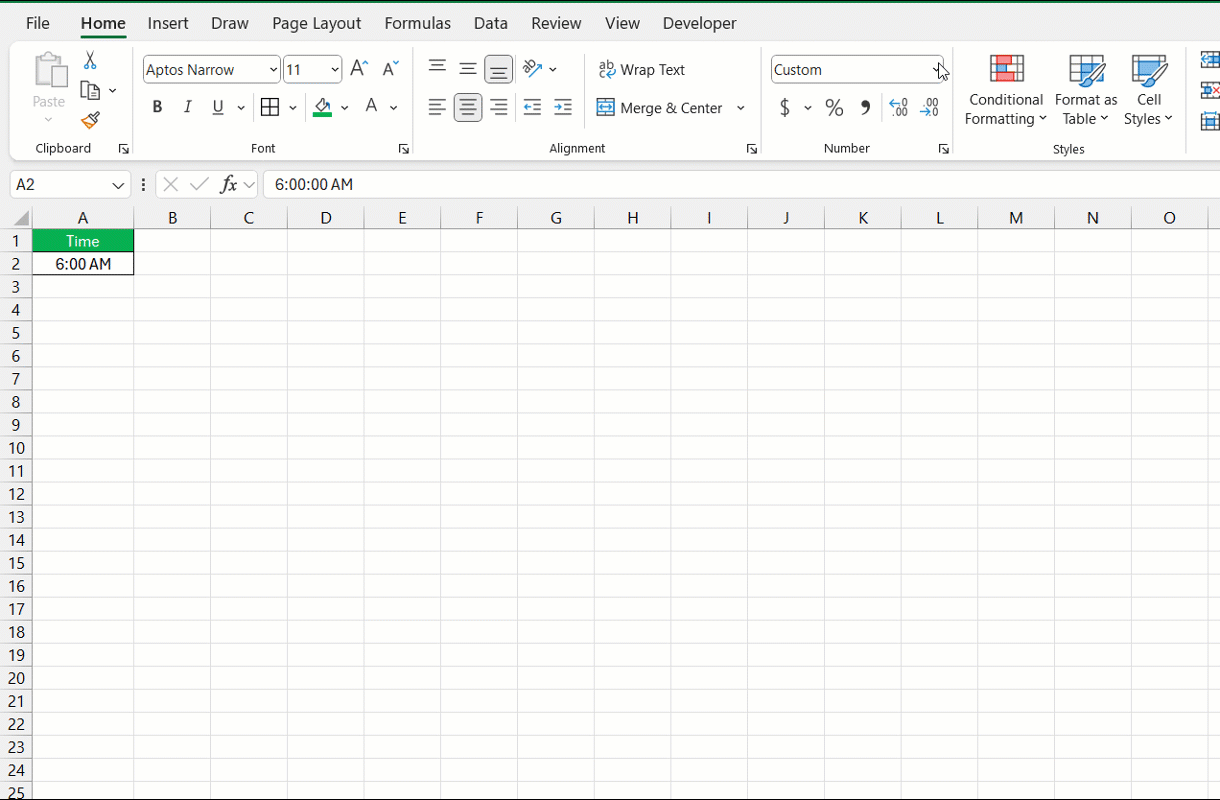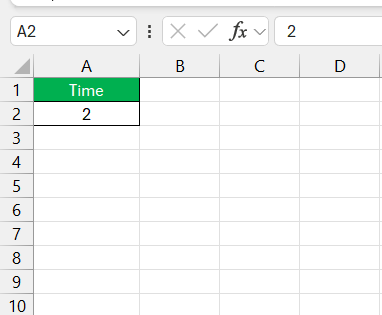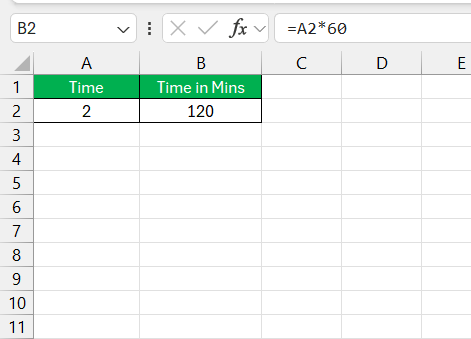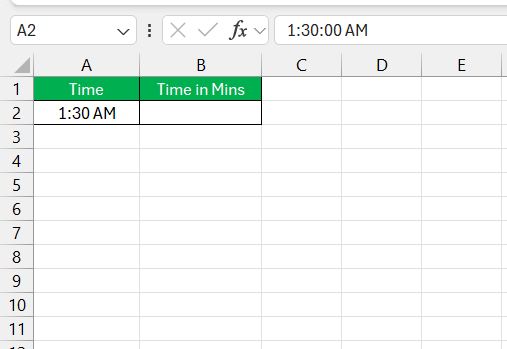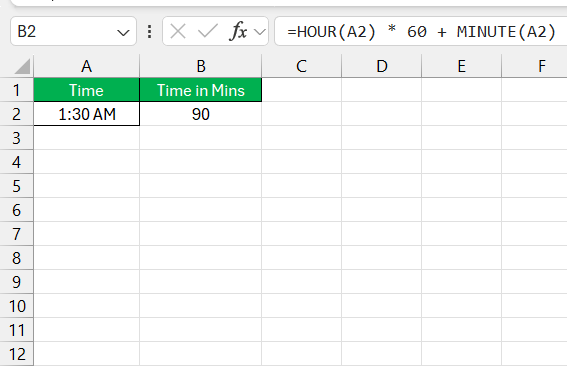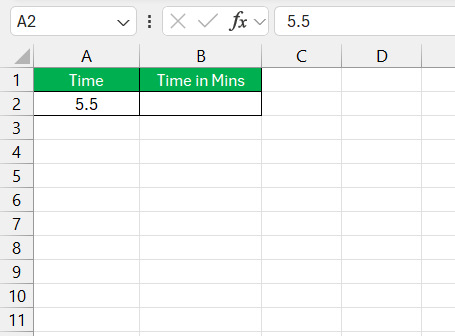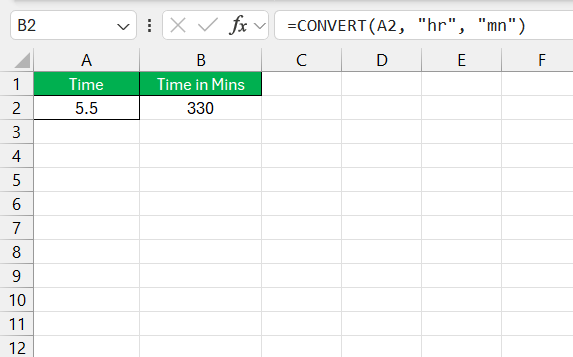Converting hours to minutes in Excel is a common task for managing time-based data and performing calculations. Whether you’re tracking project durations or analyzing time logs, understanding how to convert hours into minutes ensures accurate and useful results. This guide will provide clear, step-by-step instructions to convert hours to min using Excel’s built-in functions. Get ready to streamline your data analysis and enhance your spreadsheet efficiency.
Key Takeaways:
- Efficient Time Management: Mastering the conversion of hours to minutes helps in effectively managing and analyzing time-based data in Excel.
- Understanding Time Format: Excel stores time as a fraction of a day, which is crucial for accurate time conversion and calculations.
- Simple Multiplication: The straightforward method to convert hours to minutes is by multiplying hours by 60 using the formula =A1*60.
- Using Built-in Functions: Excel’s HOUR and MINUTE functions, along with the CONVERT function, can be utilized for converting time values from hours to minutes.
- Efficiency Tips: Leveraging keyboard shortcuts and efficient data entry techniques can streamline the time conversion process and improve productivity.
Table of Contents
Introduction to Excel Time Conversion
The Importance of Efficient Time Management in Excel
Time management is critical for professionals who juggle numerous tasks and deadlines. In Excel, efficient time management is especially significant as it enables us to swiftly analyze and manage timelines, schedules, and durations across various projects.
By mastering time conversion techniques, I enhance the effectiveness of my data interpretation and make informed decisions, all of which contribute to my overall productivity.
Overview of Converting Hours to Minutes
Converting hours to minutes in Excel might appear straightforward, but it is a powerful tool I often use to ensure consistent time tracking across different datasets. This capability comes in handy when I’m dealing with project timelines, employee schedules, or any task where time precision is key.
With the proper approach, I can quickly transform hours into minutes to facilitate clearer comparisons, detailed reports, and accurate calculations that can ultimately drive project success and time efficiency.
Understanding Excel’s Time Format
The Basics of Excel Time Representation
At the core of Excel’s capability to manage time is its distinctive time representation system. Time, in Excel, is not simply an alphanumeric value; it’s a fractional concept where Excel stores date and time values as a serial number.
This numerical system begins at 1, which stands for the first day of January 1900, and increments by 1 for each subsequent day. Time values are then expressed as a fractional part of that day. For instance, when I input ‘6:00 AM’ into an Excel cell, the program doesn’t just read ‘6:00 AM’; it calculates this as 0.25, which signifies one-quarter of a 24-hour day.
This level of quantification is critical because it allows for seamless duration calculations and easy conversions between different units of time, such as hours to minutes.
Step-by-Step Methods for Converting Hours to Minutes
Method 1: Using Simple Multiplication for Quick Conversion
The most straightforward method to convert hours to minutes is to multiply the number of hours by 60. Here’s how you can do it:
STEP 1: Type the number of hours into a cell. For example, enter 2 into cell A2.
STEP 2: In another cell, enter the formula =A2*60. This formula multiplies the value in cell A2 by 60, converting hours to minutes.
Press Enter. The result will be displayed in the cell. For example, 120 if you enter 2 in cell A2.
It’s a method I find efficient, especially when dealing with time conversions in bulk.
Method 2: Utilizing Excel’s Built-in Time Functions
If you are dealing with time values in the format of hours and minutes (e.g., 1:30 for 1 hour and 30 minutes), you can use the HOUR and MINUTE functions to extract and convert these values.
STEP 1: Type the time value into a cell. For example, enter 1:30 into cell A2.
STEP 2: In another cell, enter the formula =HOUR(A2) * 60 + MINUTE(A2). Press Enter.
The result will be the total number of minutes. For example, 90 if you entered 1:30 in cell A1.
Implementing CONVERT Function for Various Time Units
When it comes to time conversion in Excel which encompasses a variety of different units, I find the CONVERT function remarkably resourceful. This advanced function goes beyond simple hours and minutes, accommodating an array of measurements, and thus, it’s highly beneficial when I must convert between several time units.
Here’s the syntax: =CONVERT(number, from_unit, to_unit).
- number: The value we want to convert.
- from_unit: The unit of the number we’re converting from.
- to_unit: The unit we want to convert the number to.
In this case, to convert hours to minutes, you will use “hr” for hours and “mn” for minutes.
STEP 1: Type the number of hours into a cell. For example, enter 5.5 into cell A2.
STEP 2: In another cell, enter the formula =CONVERT(A2, "hr", "mn"). Press Enter.
The result will display the converted value in minutes. For example, 330 if you entered 5.5 in cell A2.
Tips to Increase Efficiency in Time Conversion
Keyboard Shortcuts for Faster Data Entry
To boost my efficiency during data entry in Excel, I take full advantage of keyboard shortcuts. These shortcuts are invaluable for me as they significantly cut down the time spent on repetitive tasks, such as entering and converting time data.
A few keyboard shortcuts that I frequently use are:
Ctrl + Shift + ;to insert the current time into a selected cell.Ctrl + ;to insert the current date.Ctrl + CandCtrl + Vto copy and paste data, an essential part of my workflow.Ctrl + Zto quickly undo any mistakes, which is a real timesaver given how often I’m juggling multiple data points.
Employing these shortcuts has substantially streamlined my data entry process, essentially becoming second nature as I navigate through sheets and datasets.
In my experience, the more fluent I am in these shortcuts, the more I can focus on complex tasks like analysis and interpretation, rather than mundane data input. It’s all about working smarter, not harder—a philosophy I embrace wholeheartedly when working with Excel.
FAQs
1. Which formula is used to change hours to minutes in Excel?
The formula used to convert hours to minutes in Excel is =A1*60, where A1 represents the cell containing the number of hours to convert. This formula multiplies the hours by 60, the number of minutes in one hour, to arrive at the total minutes.
2. How do you change a range of cells with hours to minutes in Excel??
To convert a range of cells with hours to minutes in Excel, select the entire range, enter the formula =A1*60 (with A1 as the first cell in the range), and press Enter to obtain the result in minutes for all the selected cells.
3. How do you convert decimal hours to minutes in Excel?
To convert decimal hours to minutes in Excel, multiply the decimal number by 60 using the formula =A1*60, where A1 contains the decimal hours. This converts the decimal hours into minutes.
4. What is Convert Function in Excel?
The CONVERT function in Excel is a built-in tool that allows you to convert a number from one unit of measurement to another, such as time, mass, volume, temperature, and more. Its formula structure follows the syntax =CONVERT(number, from_unit, to_unit), where “number” stands for the value you want to convert, “from_unit” is the current unit of that value, and “to_unit” represents the unit into which you are converting.
5. What is the simplest method to convert hours to minutes in Excel?
The easiest way to convert hours to minutes in Excel is by using the formula =A1*60, where A1 is the cell containing the number of hours. This multiplies the hours by 60 to obtain the equivalent minutes.
John Michaloudis is a former accountant and finance analyst at General Electric, a Microsoft MVP since 2020, an Amazon #1 bestselling author of 4 Microsoft Excel books and teacher of Microsoft Excel & Office over at his flagship MyExcelOnline Academy Online Course.

